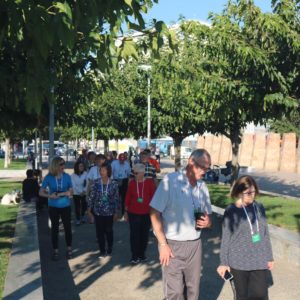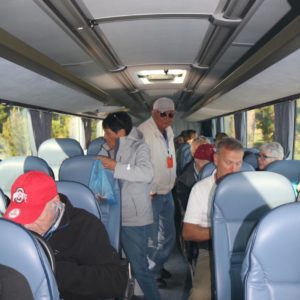The next morning we stopped at the Lion of Amphipolis. It is a tomb sculpture in honor of a general who served under Alexander the Great.
Amphipolis was visited by Paul during his missionary journeys and he probably passed by the sculpture when it was “only” a few hundred years old.
From there we drove to Philippi. We stopped at the Zygakti river at a place dedicated to the baptism of the first European convert to Christianity, a woman by the name of Lydia. There was a chapel located at the site and inside it was covered with beautiful paintings and mosaics that told the story of Acts 16:1-15 where Paul received a vision of a man from Macedonia pleading with him to come and help them; the story of Paul preaching at place of prayer by the riverside and Lydia’s subsequent conversion were also highlighted. We drove into Philippi to see the massive archaeological site. Prison cells were uncovered in the excavations and since we know from Acts 16:16-40 that Paul was imprisoned at Philippi, we were able to see the primitive and punitive conditions in which he was held. Thessalonica has an amazing archaeological. museum that we were also able to visit. To imagine Paul being publicly tried and imprisoned for his faith was humbling.
October 18, 2019








